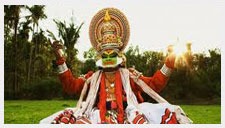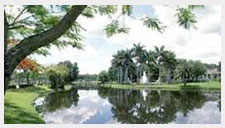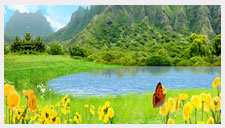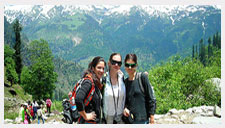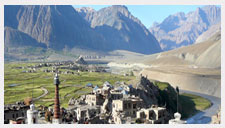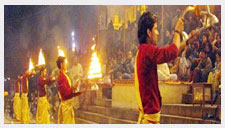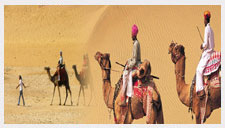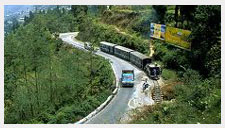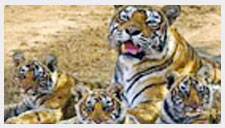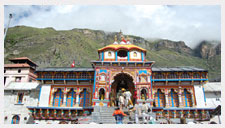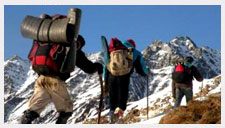About: "Kerala"
Kerala is a state located in the south-west region of India on the Malabar coast. It was formed on 1 November 1956 by the States Reorganisation Act by combining various Malayalam-speaking regions. Spread over 38,863 km2 (15,005 sq mi) with a population of 3.33 crore (33.3 million), it is bordered by Karnataka to the north and north-east, Tamil Nadu to the east and south, and the Arabian Sea to the west. Thiruvananthapuram is the state capital among the 14 districts; other major cities include Kochi and Kozhikode. The region had been a prominent spice exporter from 3000 BCE to 3rd century. The Chera Dynasty was the first powerful kingdom based in Kerala, though it frequently struggled against attacks by the neighbouring Cholas and Pandyas. During the Chera period Kerala remained an international spice trading center. Later, in the 15th century, the lucrative spice trade attracted Portuguese traders to Kerala, and eventually paved the way for the European colonisation of the whole of India. After independence, Travancore and Cochin joined the Republic of India and Travancore-Cochin was given the status of a state. Later, the state was formed in 1956 by merging the Malabar district, Travancore-Cochin (excluding four southern taluks), and the taluk of Kasargod, South Kanara. At a population of 33,388,000 in 2011, the state has the lowest population growth rate; 3.44% and a density of 819 persons per km2. Kerala has the highest Human Development Index (HDI) in the country with 0.790 according to the Human Development Report 2011. It also has the highest literacy rate; 93.91%, the highest life expectancy; 74 years and the lowest sex ratio; 923 men per 1000 women among the Indian states. A survey in 2005 by Transparency International ranked it as the least corrupt state in the country. Kerala has witnessed significant emigration of its people, especially to the Persian Gulf countries during the Kerala Gulf boom, and its economy depends significantly on remittances from a large Malayali expatriate community. Hinduism is practised by the over half of the population, followed by Islam and Christianity, while majority of over 96% people speak Malayalam. It is considered as the "cleanest state in India", however, the morbidity rate is highest in the state at 118. Culture of the state which traces its roots from 3rd century CE is a synthesis of Aryan and Dravidian cultures, developed and mixed for centuries, under influences from other parts of India and abroad. Production of pepper and natural rubber constitute prominent output in the total national output, as well as in the agricultural sector, coconut, tea, coffee, cashew, spices are important. As the state has 590 km of coastal belt, around 1.1 million people of the state are dependent on the fishery industry which contribute to 3% income of the state. With 145,704 kilometres (90,536 mi) of roads, the state constitutes 4.2% of total India's roadways. Waterways are also used as means of transportation while there are also three existing and two proposed international airports. The state has the highest media exposure in India with newspapers publishing in nine different languages; mainly English and Malayalam. Kerala is an tourist destination: the backwaters, beaches, Ayurvedic tourism, and tropical greenery are among its major attractions. National Geographic's Traveler magazine named Kerala as one of the "ten paradises of the world" and "50 must-see destinations of a lifetime"; Travel + Leisure listed it as "one of the 100 great trips for the 21st century".
History
A dolmen erected by Neolithic people in Marayur.
Prehistorical archaeological findings include dolmens of the Neolithic era in the Marayur area. They are locally known as "muniyara", derived from muni (hermit or sage) and ara (dolmen). Rock engravings in the Edakkal Caves (in Wayanad) are thought to date from the early to late Neolithic eras around 5000 BCE. Archaeological studies have identified many Mesolithic, Neolithic and Megalithic sites in Kerala. The studies point to the indigenous development of the ancient Kerala society and its culture beginning from the Paleolithic age, and its continuity through Mesolithic, Neolithic and Megalithic ages. However, foreign cultural contacts have assisted this cultural formation. The studies suggest possible relationship with Indus Valley Civilization during the late Bronze Age and early Iron Age
Geography
Anamudi from Eravikulam National Park The state is wedged between the Lakshadweep Sea and the Western Ghats. Lying between north latitudes 8°18' and 12°48' and east longitudes 74°52' and 77°22', Kerala experiences the humid equatorial tropic climate. The state has a coast of 590 km (370 mi) and the width of the state varies between 11 and 121 km (22–75 miles). Geographically, Kerala can be divided into three climatically distinct regions: the eastern highlands; rugged and cool mountainous terrain, the central midlands; rolling hills, and the western lowlands; coastal plains.] The state is located at the extreme southern tip of the Indian subcontinent and lies near the centre of the Indian tectonic plate; hence, it is subject to comparatively low seismic and volcanic activity. Pre-Cambrian and Pleistocene geological formations compose the bulk of Kerala’s terrain. A catastrophic flood in Kerala in 1341 CE drastically modified its terrain and consequently affected its history; it also created a natural harbor for spice Vembanad, the largest lake in Kerala The eastern region of Kerala consists of high mountains, gorges and deep-cut valleys immediately west of the Western Ghats' rain shadow. Forty-one of Kerala’s west-flowing rivers,] and three of its east-flowing ones originate in this region. The Western Ghats form a wall of mountains interrupted only near Palakkad; hence also known Palghat, where the Palakkad Gap breaks through to provide access to the rest of India. The Western Ghats rise on average to 1,500 m (4920 ft) above sea level, while the highest peaks reach around 2,500 m (8200 ft). Anamudi, the highest peak in south India, is at an elevation of 2,695 metres (8,842 ft). The elevations of the eastern portions of the Nilgiri Hills and Palni Hills range from 250 and 1,000 m (820 and 3300 ft).Kerala’s western coastal belt is relatively flat to the eastern region, and is criss-crossed by a network of interconnected brackish canals, lakes, estuaries, and rivers known as the Kerala Backwaters. The state's largest lake Vembanad, dominates the Backwaters; it lies between Alappuzha and Kochi and is more than 200 km2 (77 sq mi) in area. Around 8% of India's waterways are found in Kerala. Kerala’s forty-four rivers include the Periyar; 244 km, Bharathapuzha; 209 km, Pamba; 176 km, Chaliyar; 169 km, Kadalundipuzha; 130 km, Valapattanam; 129 km and the Achankovil River; 128 km. The average length of the rivers is 64 km. Many of the rivers are small and entirely fed by monsoon rain. As Kerala's rivers are small and lacking in delta, they are more prone to environmental effects. The rivers face problems such as sand mining and pollution. The state experiences several natural hazards like landslides, floods, lightning and droughts; the state was also affected by the 2004 India
Culture
During Onam, Kerala's biggest celebration, Keralites create pookkalam (floral carpet) designs in front of their houses.The annual snake boat race is performed during Onam Celebrations on the Pamba River The culture of Kerala is composite and cosmopolitan in nature and it's an integral part of Indian culture. It has been elaborated through centuries of contact with neighboring and overseas cultures.] However, the geographical insularity of Kerala from the rest of the country has resulted in development of a distinctive lifestyle, art, architecture, language, literature and social institutions. There are around 10,000 festivals celebrated in the state. The Malayalam calendar, a solar calendar started from 825 CE in Kerala, finds common usage in planning agricultural and religious activities.Dance Kerala is home to a number of performance arts. These include five classical dance forms: Kathakali, Mohiniyattam, Koodiyattom, Thullal and Krishnanattam, originated and developed in the temple theatres during the classical period under the patronage of royal houses. Kerala natanam, Kaliyattam, Theyyam, Koothu and Padayani are other dance forms associated with the temple culture of the region. Some traditional dance forms such as Margamkali, Parichamuttu and Chavittu nadakom are popular among the Christians, while Oppana and Duffmuttu are popular among the Muslims of the state.Development of classical music in Kerala is attributed to the contributions it received from the traditional performance arts associated with the temple culture of Kerala. Development of the indigenous classical music form, Sopana Sangeetham, illustrates the rich contribution that temple culture has made to the arts of Kerala. Carnatic music dominates Keralite traditional music. This was the result of Swathi Thirunal Rama Varma's popularisation of the genre in the 19th century. Raga-based renditions known as sopanam accompany kathakali performances. Melam; including the paandi and panchari variants, is a more percussive style of music: it is performed at Kshetram-centered festivals using the chenda. Panchavadyam is a different form of percussion ensemble, in which artists use five types of percussion instrument.] Kerala's visual arts range from traditional murals to the works of Raja Ravi Varma, the state's most renowned painter. Most of the castes and communities in Kerala have rich collections of folk songs and ballads associated with a variety of themes; Vadakkan Pattukal (Northern Ballads), Thekkan pattukal (Southern Ballads), Vanchi pattukal (Boat Songs), Mappila Pattukal (Muslim songs) and Pallipattukal (Church songs) are a few of them.Kerala cuisine has a multitude of both vegetarian and non-vegetarian dishes prepared using fish, poultry and meat. Culinary spices have been cultivated in Kerala for millennia and they are characteristic of its cuisine. Rice is a dominant staple that is eaten at all times of day. Breakfast dishes are frequently based on the rice preparations idli, puttu Idiyappam, or pulse-based vada or tapioca. These may be accompanied by chutney, kadala, payasam, payar pappadam, Appam, egg masala and fish curry. Lunch dishes include rice and curry along with rasam, pulisherry and sambar. Sadhya is a vegetarian dish, often served on a banana leaf and followed with a cup of payasam. Popular snacks include banana chips, yam crisps, tapioca chips, unniyappam and kuzhalappam. Non-vegetarian dishes, including those with beef and pork, are popular in the state Sea food specialities include karimeen, prawn, shrimp and other crustacean dishes.
Tourism
The stone sculpture of Kuruvan and Kuruvati at Ramakkalmedu in Kerala Its culture and traditions, coupled with its varied demographics, have made Kerala one of the most popular tourist destinations in India. National Geographic's Traveller magazine names Kerala as one of the "ten paradises of the world" and must see destinations of a lifetime". Travel and Leisure names Kerala as "One of the 100 great trips for the 21st century". Kerala's beaches, backwaters, mountain ranges and wildlife sanctuaries are the major attractions for both domestic and international tourists. The city of Kochi ranks first in the total number of international and domestic tourists in Kerala.Until the early 1980s, Kerala was a relatively unknown destination to other states of the country. But in 1986 the government of Kerala declared tourism as an industry and it was the first state in India to do so. Marketing campaigns launched by the Kerala Tourism Development Corporation, the government agency that oversees tourism prospects of the state, resulted in the growth of the tourism industry. Many advertisements branded Kerala with a catchy tagline Kerala, God's Own Country. Today, Kerala tourism is a global brand and regarded as one of the destinations with highest recall. In 2006, Kerala attracted 8.5 million tourist arrivals, an increase of 23.68% over the previous year, making the state one of the fastest-growing destinations in the world. In 2011, tourist inflow to Kerala crossed the 10-million mark.Ayurvedic tourism became very popular since the 1990s, and private agencies like Kottakkal Arya Vydyasala played a notable role in tandem with the initiatives of Tourism Department.Kerala is known for its ecotourism initiatives and in this segment it promotes mountaineering, trekking and bird-watching programmes in the Western Ghats as the major products. As of 2005, the state's tourism industry was a major contributor to the state's economy, which is currently growing at a rate of 13.31%. The revenue from tourism increased fivefold between 2001 and 2011 and crossed the 190 billion mark in 2011. Moreover, the industry provides employment opportunity to approximately 1.2 million people.The most popular tourist attractions in the state are beaches, backwaters and hill stations. Major beaches are at Kovalam, Varkala, Kappad, Muzhappilangad and Bekal. Popular hill stations are at Munnar, Wayanad, Wagamon, Peermade, Nelliampathi and Ponmudi. Kerala's ecotourism destinations include wildlife sanctuaries and two national parks: Periyar Tiger Reserve, Neyyar Wildlife Sanctuary, Chinnar Wildlife Sanctuary, Thattekad Bird Sanctuary, Wayanad Wildlife Sanctuary, Muthanga Wildlife Sanctuary, and Eravikulam National Park are the most popular among them. The "backwaters" are an extensive network of interlocking rivers (41 west-flowing rivers), lakes, and canals that center around Alleppey, Kumarakom, Kollam and Punnamada (where the annual Nehru Trophy Boat Race is held in August). Padmanabhapuram Palace and the Mattancherry Palace are two notable heritage sites. According to a survey conducted among foreign tourists, Elephants, fireworks display and huge crowd are the major attractions of The Roads










